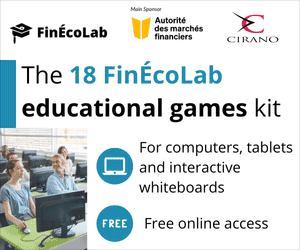A professor in York University's Lassonde School of Engineering, Department of Electrical Engineering and Computer Science, has created a course to set students on the path to biomedical engineering and entrepreneurship.
Assistant Professor Neda Salahandish identified a gap in biomedical engineering courses - crucial for engineers and scientists who plan to establish companies related to the growing demand for biomedical devices and prosthetics for an aging population.
The result is the third-year course LE/EECS 3640 Introduction to Biomedical Engineering for Electrical/Computer Engineering.
Salahandish applies an interactive approach to teaching the class, with an emphasis on coupling biomedical engineering skills with an entrepreneurial mindset. She divides students into teams, each with a CEO, each developing a biomedical device using the fundamental knowledge gained throughout the course. Teams present their progress weekly and explain what they have learned. Salahandish says she offers bonuses, just like in the work world, to keep students engaged and involved.
The course is popular, attracting 58 students from various engineering backgrounds, despite being a third-year course with prerequisites.
At the end of the semester, students will present their projects to a panel of investors, Lassonde School of Engineering faculty, industry leaders and company CEOs and receive real-world feedback on the commercialization potential of their designs.
The projects are impressive, Salahandish says, noting one team is developing a microfluidic sensor that is a wearable device to detect dehydration by monitoring sweat samples.
Behrouz Homam is on that team. The third-year electrical engineering student explains it's a small device that perhaps an athlete, or a patient with an illness likely to cause dehydration, can apply to their skin. The person's sweat runs through the device's micro channels to tiny nodes that measure the sodium level and determine if the sweat is acidic or basic.
Luca Mazzo is on the same team. He works with the gold nanoparticulate solution which detects sodium chloride in sweat. It causes the device to change colour from light pink to light blue. Mazzo, a third-year electrical engineering student, and his teammates are working on increasing the concentration to create a darker colour that's easier to read.
The sensor would be part of an arsenal of biomedical devices that could lower health-care costs by improving at-home care of patients, Homam says.
The team had high hopes of creating a device to also measure potassium and sodium levels; however, Homam explains their device is at its minimum viable product (MVP) stage and could be further developed if it is deemed commercially viable and attracts investment funding.
Another project that impressed Salahandish is a lie detector that uses artificial intelligence (AI) algorithms and infrared cameras to detect changes in pupil dilation, heartbeat and blood pressure.
Salahandish is a veteran of developing and commercializing biomedical devices. As a post-doctoral student at the University of Calgary, she co-founded the company Critical DX which developed microfluidic-based platforms for detecting concussions.
Her startup company in Ontario, WearNovAi, focuses on wearable diagnostic devices for early disease detection. The company works under the auspices of her lab, the Laboratory of Advanced Biotechnologies for Health Assessment (LAB-HA) at the Department of Electrical Engineering and Computer Science within Lassonde. It has secured more than $2.5 million in funding, including a recent grant of $300,000 from the Ontario Institute for Cancer Research.
Salahandish and her lab team are developing wearable sensors that detect biomarkers in sweat. These devices use AI-powered pattern recognition to identify biomarker fingerprints linked to diseases such as breast cancer, Parkinson's and Alzheimer's. The lab works with neurologists at Toronto hospitals to collect blood, sweat and tears from patients for biomarker discovery.
In her lab undergraduate and graduate students collaborate, which gives undergrads an opportunity to explore research and graduate students an opportunity to take on mentorship and leadership roles.
The team is also developing smart goggles for tracking disease conditions in patients with Alzheimer's, epilepsy and neurodegenerative diseases.
Salahandish believes self-screening devices can be an affordable solution that will help reduce health-care costs.
"If we have something for self-screening, you don't have to go anywhere and it's really cheap, it's going to reduce the burdens on Health Canada," Salahandish says.
She says her inspiration for studying and developing health detection devices is personal. "My father had colon cancer, and I thought I should help. I should do something it was my approach to develop devices for early detection," she says.
"I think it's going to be a big help to the Canadian community and all the people across the world."
This story was originally featured in YFile, York University's community newsletter.













